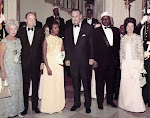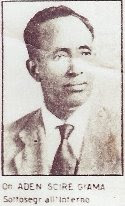It is one year today since the Kenya Defence Forces moved into Somalia to tackle the threat posed by the Shabaab in the region bordering Kenya. Somalia expert Prof Ken Menkhaus of Davidson College, USA, offered his assessment of the intervention to Sunday Nation’s
Q: How has Kenya’s entry into Somalia and its new assertive and interventionist posture altered the regional geopolitical landscape? How are the other key regional players reacting?
A: Kenya’s intervention in southern Somalia initially complicated regional geopolitical dynamics, especially with regard to Ethiopia and its security concerns in southern Somalia.
Over time, the two countries have worked much more closely together to reach broad agreement on a number of matters, particularly how to handle the provisional authority that needs to be set up in Kismayu in conjunction with the new Somali government. In the end, this has actually helped improve and routinise regional cooperation between Kenya and Ethiopia.
Q: Cynics argue that Kismayu may turn out to be a poisoned chalice? Are they right?
A: It is too soon to tell. Everything now depends on the will of the Somali people to forge a broad-based local government in Kismayu and to produce circumstances that will welcome Somalis from all parts of the country to participate in the enormous potential commercial opportunities that Kismayu presents. If Somalis seize this advantage, Kismayu could actually become a model for the rest of the country.
If, however, Somali factions fight over Kismayu it is going to be the country’s Sarajevo — a divided and war-torn city, which will not so much be a poison chalice for Kenya but a poisoned chalice for the new government of President Mohamud.
Q: You have in the past suggested that you favour a “cosmopolitan solution” in Kismayu? What exactly do you mean?
A: What I mean by that is that Kismayu is a large commercial city in which many different Somalis and non-Somalis have lived for the past 120 years. There is an opportunity for Kismayu to be a place where all clans have full rights to live and do business.
The danger in Somalia is that many cities and towns have been claimed by single clans and the consequences have been clan conflicts.
What I am arguing is that we have to be very careful not to encourage a victor’s peace in Kismayu in which one clan militia or a coalition of clan militias dominate the city and excludes others. This may result in the excluded clans turning to insurgency — turning to Al-Shabaab.
Q: The US has in the past voiced reservations about aspects of the so-called Jubbaland initiative. Some analysts suggest the view in Washington is now more charitable. What is your own reading?
A: The US Government, as I understand it, was principally concerned that the Kenyan military intervention in the Jubba regions will produce the same kind of Somali anger and mobilisation that occurred when Ethiopia intervened militarily in Somalia in December 2006; in that case, Shabaab was the principal beneficiary. That did not occur with the Kenyan intervention, which was a pleasant surprise.
Most Somalis were in fact very unhappy with the Kenyan military intervention in Somalia. They saw it as yet another instance of foreign occupation of their country.
But for a variety of reasons — war-weariness, and certainly dissatisfaction with Al-Shabaab — Somalis did not mobilise around Al-Shabaab to resist the Kenyan military offensive. This was a legitimate fear on the part of the US Government.
Q: It is exactly one year since Kenya sent its troops to Somalia to dislodge Al-Shabaab from the Jubba Valley. Do you think it has achieved its goals?
A: It is too soon to tell. First, the Kenyan government expressed a variety of different goals last year, so many of us were not certain as to what the exact objectives were.
Once the objectives became better clarified — that is to oust Al-Shabaab from the city of Kismayu — I think the objectives have, at least, been partially met.
Kismayu is no longer under the control of Al-Shabaab, but everyone is aware that Al-Shabaab still has sleeper cells in Kismayu and that it is going to take some time before the city is completely stabilised.
Q: Many regional and foreign experts have been sceptical of the Kenyan military’s ability and competence to degrade Al-Shabaab. Have you been surprised at the relative success of the KDF’s military campaign? How do you assess the KDF’s overall performance so far?
A: First, let me say that I am not an expert on military matters, so my opinions are strictly as an amateur observer.
I would say that there were some initial concerns that had to do with the unusual timing of the intervention, as it occurred right in the middle of a rainy season. That raised some scepticism.
Since then, the main concern that most defence analysts have voiced is not that the Kenyan military will have trouble in the open country where it has superior firepower, but that it could get bogged down in an asymmetrical urban guerrilla war in Kismayu. This will be the real test of the capacity of the Kenyan military.
I should add that it will not test the Kenyan military’s ability to respond to periodic Shabaab attacks, but its ability to play the messy political role of referee of the many competing Somali factions and militias hoping to claim a role in the administration of the city.
Q: What is the future for Al-Shabaab?
A: Al-Shabaab, as a military insurgency, is certainly in decline and crisis. It has lost all of its main urban areas, almost all of its access to the sea.
It has been pushed into remote rural areas of the countryside in the south. It has lost most of its support from Somalis, and its finances, thanks to the loss of Kismayu seaport, have been devastated.
Al-Shabaab will however remain one of the most powerful militias in Southern Somalia for some time to come.
It continues to possess a network of cells in all of Somalia’s major urban areas and a capacity to engage in acts of terrorism. We can expect them to engage in targeted political violence in Somalia and in Kenya for some time to come.
And even if the movement eventually disintegrates, the grievances Al-Shabaab was able to tap into will remain. It is important for Somali leaders and regional and international actors to address those grievances or someone else will exploit them.
Q: Does this then mean Kenya is now at a greater risk of a violent blowback from Al-Shabaab?
A: We have long worried that Al-Shabaab will eventually take the war to Kenya. We know that Al-Shabaab has networks in Kenya both from Somalia and from those it has recruited in Kenya.
These networks possess the capacity to engage in acts of terrorism inside Kenya. As it faces growing pressure in southern Somalia, Al-Shabaab is relocating its activities to the north, into Puntland, and also southwards, into Kenya.
Q: You have in the past been critical of the Somali transitional governments. The country now has a more credible and popular leadership. Has Somalia turned a corner?
A: Again, it is simply too soon to tell. This new government has great promise in terms of the quality and commitment of the new leadership, and it enjoys broad support from a hopeful Somali population.
Unlike the TFG, which was unwilling and unable to govern, the current post-transitional government is unable but willing to govern. It wants to extend good governance, but it lacks the capacity.
It will take a long time to build up its capacity to govern and we need to be patient as it weathers what promises to be a very difficult period ahead.
Ken Menkhaus is professor of political science at Davidson College and a specialist on the Horn of Africa.
KISMAYO SEA PORT from AU/UN IST News on Vimeo.
A video showing Kismayo Sea Port, southern Somalia.
KISMAYO SEA PORT from AU/UN IST News on Vimeo.




.jpg)











No comments:
Post a Comment